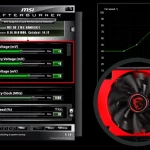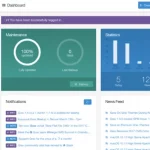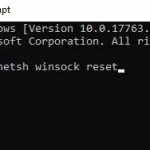You’re ready to get started with your work or leisure, but suddenly your monitor seems to have other plans, diving deep into a power-saving slumber and refusing to wake up. Sound familiar? Well, you’re not alone.
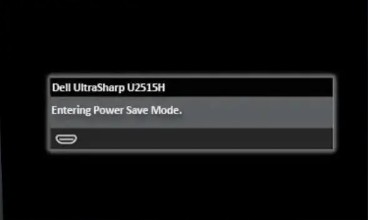
If your screen is pitch-black, flashing that infamous ‘power saving mode’ message, or simply ignoring your desperate attempts with the mouse and keyboard, don’t fret.
We’ve got your back. Here’s a lowdown on what could be causing this and how to get things back in action.
Table of Contents
Common Causes
Before you roll up those sleeves and dive into fixing the issue, understanding the potential causes can be super helpful.
- Loose Connections: Often, it’s the little things that trip us up. The connection between your computer and the monitor might look good on the surface, but it could have loosened over time. A cable that’s slightly out of place can be the root cause of your monitor’s slumber party. So, a good, snug connection can be a game-changer. Check those cables and connectors!
- Outdated Drivers: Believe it or not, drivers play a massive role in the harmonious relationship between your computer and monitor. Think of drivers as translators ensuring both devices understand each other perfectly. If the translator starts using old dialects (read: outdated drivers), miscommunication can arise. Ensuring your graphics card driver is up-to-date can be like updating that translator’s dictionary, making conversations between the two devices smooth again.
- Incorrect Display Settings: Your PC might be trying to communicate in a language or format that the monitor just doesn’t understand. If the display settings, like resolution or refresh rate, aren’t in sync with what your monitor can handle, it might just decide to take a break. It’s like trying to fit a square peg in a round hole; it’s just not a match.
- Hardware Issues: While less frequent, sometimes the problem can be a bit more than skin deep. It’s possible that there’s an issue with the actual hardware. This could be a glitch in your graphics card or perhaps even something within the monitor itself. It’s like having a car with a faulty engine; no matter how much you polish the exterior, you might still have trouble starting it up.
Troubleshooting That Rogue Monitor
Alright, tech enthusiast, here are some solid steps to potentially bring your monitor back to life:
- Physical Checks: Before diving into the more complex stuff, let’s start simple. Are those cables snaking behind your monitor? Give them a once-over. Ensure they’re snugly connected to both the monitor and the computer. If you’re feeling extra thorough, go ahead and unplug them, then plug them back in. Sometimes, a little reconnection can jolt things back to normal. It’s much like ensuring your headphones are plugged in before wondering why there’s no sound.
- Change Power settings: Open the Power Plan settings, which you can find in either the Control Panel or the settings menu. Once there, tweak the power plan to ensure your monitor doesn’t jump into power-saving mode prematurely. And while you’re adjusting things, it’s a good idea to switch off any settings related to sleep or power-saving modes that might be messing with your monitor’s regular functioning.
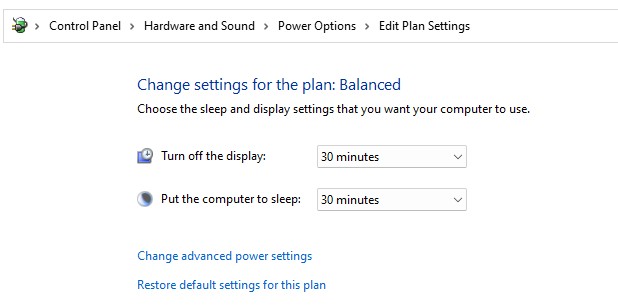
- Restart the System: It might sound cliché, but sometimes turning it off and on again is all you need. It’s like giving your system a quick nap and a fresh start. Restarting can clear minor glitches and refresh system processes, which often does the trick.
- Safe Mode Start: Think of booting your computer in safe mode and stripping it down to its essentials. Safe mode runs the system with only the crucial drivers and services, eliminating potential culprits. If your monitor springs back to life in this mode, it’s a hint that there might be driver conflicts or settings that don’t sit well with it.
- Driver Update: Just like updating your playlist with the latest hits, updating your graphics card drivers can rejuvenate the system. Head to the device manager, locate your graphics card and see if there’s a fresh update waiting. This can iron out any wrinkles in communication between your PC and the monitor.

- Display Settings Tango: Your PC might be trying to show visuals in a way that your monitor can’t dance to. Pop into your display settings and make sure that the resolution and refresh rate vibe with what your monitor can handle. Adjusting these to compatible levels can make a world of difference.
Addressing the “No Signal” Message
Perhaps the most vexing part of this issue is when your monitor declares ‘No Signal’ as it plunges into power-saving mode. Here’s what you can do:
- Source Check: Monitors can often juggle multiple input sources, from HDMI to VGA to DisplayPort. Think of it like switching between TV channels. If you’re on the wrong channel, you’ll miss your favorite show. Similarly, if your monitor is set to a different source than the one you’re connected to, you’ll get that vexing “No Signal” banner. So, pop into your monitor’s settings or use its physical buttons, and ensure you’ve chosen the right input source. For instance, if you’re rocking an HDMI connection, make sure HDMI is the selected source.
- Alternate Devices: Sometimes, it’s essential to see if the issue is with the monitor or the device it’s connected to. Hook your monitor up to a different computer or laptop. If it springs to life, it’s a hint that the problem might be with your primary device. On the flip side, if the “No Signal” drama continues, the monitor might be the one playing hard to get.
- Cable Swap: Cables, as inconspicuous as they seem, can sometimes be the root of all tech evils. Constant plugging and unplugging, bending, or just wear and tear over time can make them faulty. If you’ve got a spare cable lying around or can borrow one, give it a whirl. Switching out a potentially defective cable for a new one could instantly resolve the “No Signal” conundrum.


